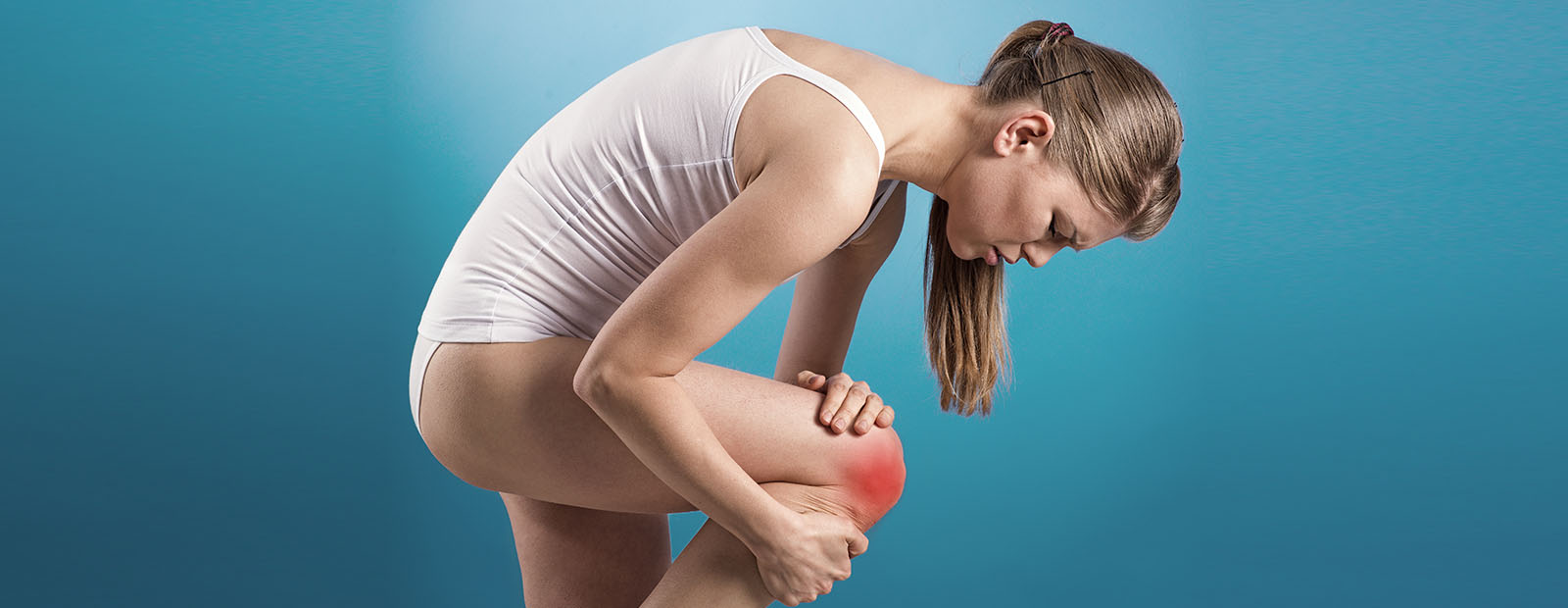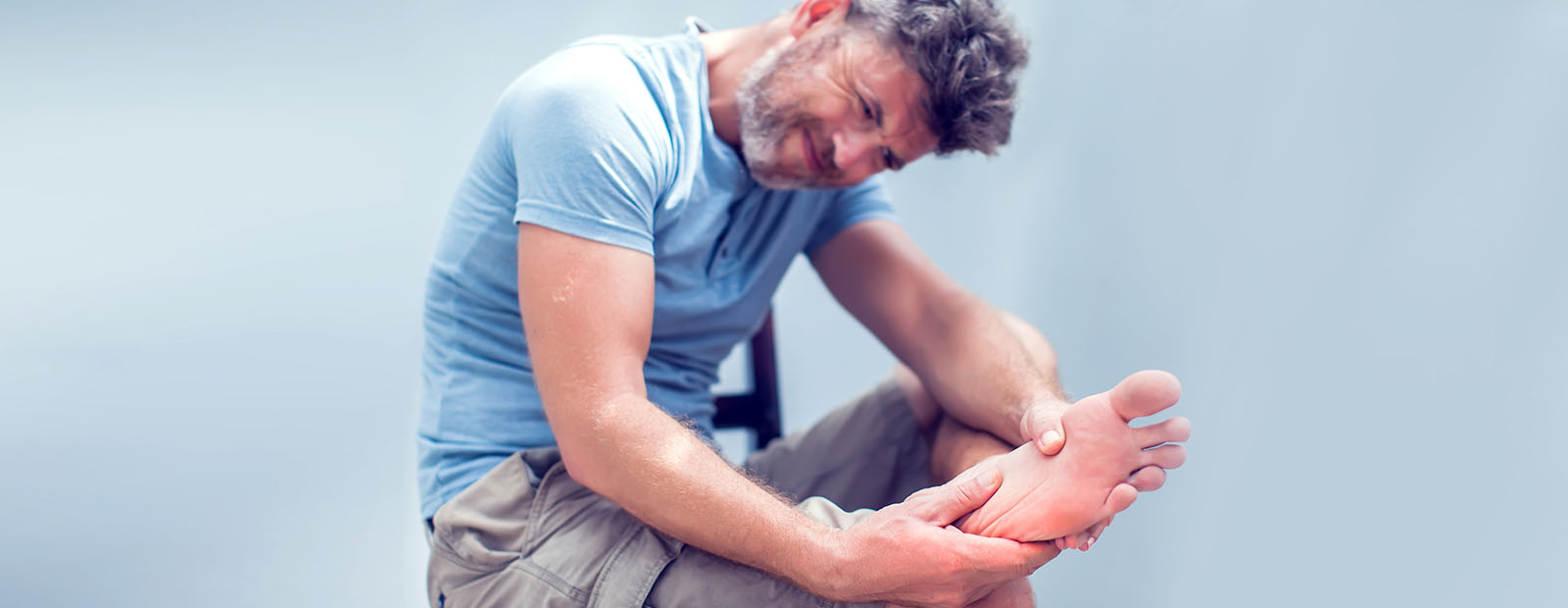Peripheral Neuropathy Treatment Options
Peripheral neuropathy is a term that could refer to a wide range of medical conditions affecting the peripheral nervous system.
Each of these conditions might have different underlying causes and symptoms. Therefore, peripheral neuropathy treatments might differ depending on the exact form of neuropathy.
Understanding peripheral neuropathy and the goals of treatment
Peripheral neuropathy is the most common type of neuropathy, characterized by damage or dysfunction of nerves in the peripheral nervous system. You might experience symptoms like sharp nerve pain, unpleasant sensitivity, numbness or tingling, muscle weakness or paralysis, and difficulty coordinating movement and motor functions.
These symptoms might appear in the limbs, organs, and torso, and it's possible to experience other symptoms depending on where the neuropathy manifests, like problems with digestion or circulation and bladder issues.
The ultimate goal of neuropathy treatment is to treat the underlying issue that causes neuropathy.
However, this is not always possible because neuropathy might be a symptom of some chronic diseases, or the nerve damage might be permanent. In these cases, treatment efforts are usually focused on reducing symptoms.
Treating the underlying causes of neuropathy
There's a broad range of peripheral neuropathy causes. Some of these might be as simple as a swollen muscle pressing on the nerve, while others might be incurable chronic diseases like arthritis.
Whenever possible, doctors will try to cure or treat the underlying issue. In some cases, this might entirely heal neuropathy. Otherwise, it could reduce its effects on your daily life.
Compression or irritation of the nerve
A common cause behind neuropathy is physical irritation of the nerves. Inflammation, swollen tissues, or bone deformities might compress the nerves. In these cases, healing the inflammation, resting, or surgically correcting the bone deformities might resolve the effects of neuropathy.
Nutritional deficiencies
Another easily treatable cause behind neuropathy might be nutritional deficiencies, like low vitamin B12, copper, or vitamin B6 levels. These can be remedied by changing your diet and taking additional supplement or vitamins for neuropathy.
Diabetes
Diabetes is another common underlying issue that might lead to peripheral neuropathy. While diabetes has no known cure yet, keeping a proper diet, avoiding alcohol and smoking, and maintaining a healthy weight might all help reduce the symptoms and the effects of diabetic neuropathy.
Other underlying causes with available treatment options
In addition to these underlying issues, there are other less common causes for neuropathy. Let's take a look at some of them and their possible treatment options.
- Infections - Antibiotics or antiviral drugs
- Autoimmune disorders - DMARDs, immunosuppressants, or immunoglobulin treatments
- Medication-induced neuropathy - Changing certain medications or reducing dosages
- Toxins and chemical exposures - Chelation therapy, antitoxins, avoiding further exposure, taking protective measures
Peripheral neuropathy pain relief
Nerve pain is one of the most common symptoms of peripheral neuropathy. Regardless of whether the neuropathy is acute or chronic, pain management is essential for any neuropathy treatment plan.
Traditional painkillers
When it comes to painkillers, we have multiple options, depending on the source and severity of the pain. Analgesics, like paracetamol, can reliably relieve lesser acute pains. Nonsteroidal anti-inflammatory drugs (NSAIDs) can treat pain and inflammation at the same time. Steroid-based injections might come in handy when dealing with chronic inflammatory pains. And opioids might be prescribed for more severe pains.
The upside of these medicines is that they provide reliable neuropathic pain treatment. The downside is that they often come with potential side effects.
Natural pain remedies
Natural pain remedies might not be as potent as traditional drugs, but they usually have fewer side effects.
Capsaicin, extracted from chili peppers, is a well-known natural painkiller that can help ease pains locally. Boswellia is another natural, herbal-based remedy that could help relieve lesser pains. Certain essential oils, like lavender, might also offer some pain relief.
Drug-free pain management options
If you want to avoid the side effects of traditional drugs or supplement them with methods that don't interfere with other medications, then you could explore these drug-free pain relief options.
Temperature therapy
Heat and cold therapy are proven and reliable methods to ease pain without significant side effects. Heat therapy can help ease swollen or overused muscles, and cold therapy can numb pain and reduce inflammation.
Physical therapy
Gentle stretches, low-impact exercises, and massages might help ease mild pains and improve circulation. Yoga, tai-chi, and swimming are excellent forms of exercise when dealing with chronic pains.
Drug-free pain patches
Another drug-free, non-invasive pain management method that you could try is our Freedom pain patch. These patches use unique vibrotactile technology to communicate directly with the nervous system and relieve pain.
Treating other symptoms of neuropathy
Peripheral neuropathy might come with additional symptoms and issues related to the functions of the affected nerves.
- Physiotherapy or assistive devices can effectively address muscle weakness or paralysis.
- Erectile dysfunction and digestive issues might call for additional medications.
- Loss of balance and coordination can benefit from specialized exercises and balance training.
- Cognitive impairments associated with peripheral neuropathy may require cognitive rehabilitation programs and memory-enhancing techniques.
Neck Pain Symptoms & Causes
The neck is a hardworking part of the body, made up of vertebrae that extend from the upper torso to the skull. Cervical discs absorb shock between these bones. The vertebrae, muscles and ligaments at the top of the spine support the head together, which weighs 11 pounds on average – the weight of a bowling ball.
The neck is also known as the cervical spine, and neck pain – or cervicalgia as it is sometimes called – refers to pain in or around the spine beneath the head.
As a common symptom of multiple injuries and medical conditions, neck pain usually isn’t serious and improves with simple treatment strategies. However, pain that continues for a number of months could indicate an underlying medical condition. In some incidences, early intervention may be required for best results.
Symptoms of Neck Pain
Individuals may experience axial neck pain, referring to pain felt mostly in the neck, or radicular neck pain, where pain shoots to other areas of the body, such as the shoulders or arms. Pain may be acute, resolving in under six weeks, or chronic, where symptoms extend beyond three months.
Symptoms of neck pain may include:
- Neck stiffness that may cause a decreased range of motion
- Sharp pain that is localized to one area
- Pain while moving
- Radiating pain or burning sensations, or numbness, possibly signifying a compressed or pinched nerve
- Neck pain that produces a headache, also referred to as a cervicogenic headache; a combination of neck and head pain may also be symptoms of a migraine headache
Neck Pain Causes
There are a variety of causes for neck pain or stiffness:
Muscle Strain and Tension
This type of pain is typically the result of activities such as:
- Being sedentary for too long
- Having your computer monitor positioned too low or too high
- Quick movement during exercise
- Sleeping in a position that aggravates your neck
Injury
Falls, sporting mishaps and car accidents often force the muscles and ligaments of the neck to move outside a healthy range of motion, causing injury. A sudden jerking of the head, referred to as whiplash, is one of the neck pain causes most common as a result of injury. Fractures in the neck bones – or cervical vertebrae – are very serious as they may cause damage to the spinal cord.
Other Causes
Neck pain causes may also include heart attacks, presenting alongside other symptoms such as sweating, shortness of breath, pain in the arm or jaw, nausea or vomiting. This requires urgent medical attention.
A layer of thin tissue surrounds the brain and spinal cord. Inflammation of this tissue is known as meningitis, a life threatening condition that may result in neck stiffness. Other symptoms such as headache, nausea, vomiting and light sensitivity are likely to be present as well.
Degenerative diseases such as osteoporosis, osteoarthritis, spinal stenosis and spondylosis (known as arthritis of the neck) may all be potential neck pain causes. Other conditions such as rheumatoid arthritis (inflammation of the joints) and fibromyalgia may also result in ongoing neck stiffness or neck pain.
On rare occasions, neck pain or neck stiffness may be the result of infections, abscesses, tumors, cancer of the spine or congenital abnormalities.
Neck Pain Red Flags
In certain incidences, neck pain is serious, where there may be an underlying disease or infection, or the health of the spinal cord or a nerve root may be at risk. Red flags may include pain or tingling that radiates into the arms or legs, issues with balance and coordination, or fevers and chills. These symptoms require immediate treatment by a medical professional, as does severe neck pain as a result of traumatic injury, such as a serious fall or car crash.
Paying close attention to symptoms of your neck pain can help you choose the right course of action. While simple behaviors such as poor posture or uncomfortable sleep positions are more common causes of neck pain, medical attention should be immediately sought out for pain that is severe, that continues beyond a week, or is accompanied by other symptoms.
Potential Causes of Muscle Pain
Muscle pain, also known as myalgia or myofascial pain syndrome (MPS), is the result of inflammation in the body’s soft tissues. Muscle pain can be brought on by a broad number of issues, injuries or conditions, and experienced as a random sharp pain or a steady, deep ache. Individuals may have localized pain in a specific area, or pain may be felt systemically all over the body. Soreness in the muscles may be short-term or chronic.
Here are a number of potential causes of muscle pain:
Strains, Overexertion & Injuries
These are the most common causes of muscle pain. In these instances, soreness in muscles is typically limited to a few muscles or a small area of the body.
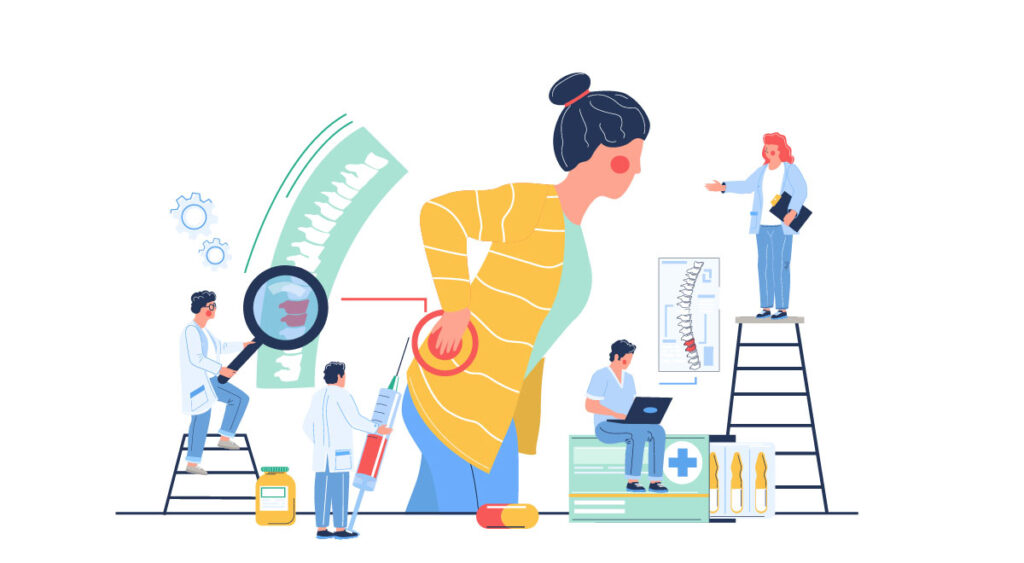
Strains happen when tendons are stretched beyond their normal capacity, such as during a fall or a sudden twisting motion, and induce pain that may last a few days or longer. Overexertion, where the body is pushed too hard, such as long periods of standing or a heavy gym session, may cause soreness in the muscles for a day or two. Injuries or hard blows may induce bruising, swelling and muscle pain. Other types of injuries resulting in muscle pain include abdominal or back strains, broken bones, overuse through repetitive motion and tendinitis.
Stress & Tension
Psychological or physical stress may take its toll on the body in the form of myalgia. This muscle pain is caused because the body tenses in response to stress as a protective measure against potential injury. Longer lasting or chronic stress can create a continuous state of muscle tension, often inducing soreness in the muscles. This type of pain is typically felt most in the shoulders, neck and jaw.
Poor Posture Can Cause Muscle Pain
Standing, sitting or exercising with poor posture can strain certain muscles, inducing muscle pain. This soreness in the muscles is often felt most in the upper and lower back.
Infection
Myalgia that is experienced throughout the whole body is most often caused by an infection, such as the flu. Other infections include pneumonia, malaria, polio, Lyme’s disease or other bacterial or viral infections. Soreness in muscles may be accompanied by other symptoms such as nausea, fever and swollen lymph nodes.
Medication
Muscle pain may also be a side effect of certain medicines, treatments or drugs. These could include statins, ACE inhibitors, chemotherapy, radiation therapy or cocaine. In some cases, this is because muscle pain receptors are activated, or inflammation around the cells of the muscles is induced.
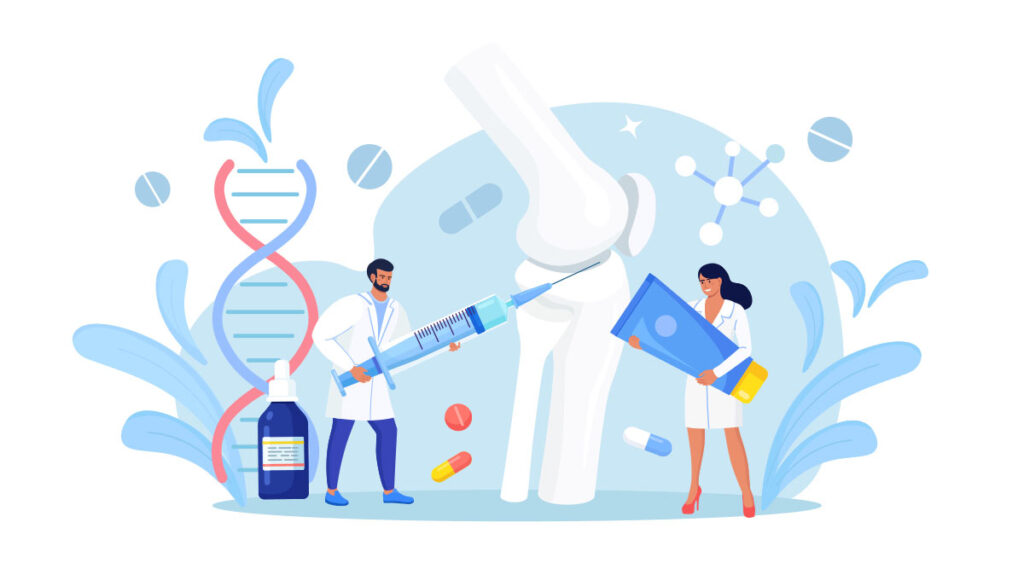
Dehydration
Not drinking enough water in general can result in muscle pain or cramping. Dehydration post-exercise can also increase soreness in muscles.
Lack of Sleep
Poor sleep robs the body of important recuperation it needs to function optimally. Lack of sleep can therefore lead to the body feeling run down, where myalgia is often experienced.
Nutritional Deficiencies
Muscle pain or aches may be the result of nutritional deficiencies in the diet. Lack of vitamin D is known to cause muscle pain, and anemia may result in cramping and soreness in the muscles.
Autoimmune Diseases
The body’s immune system may mistakenly perceive threats in the body and attack healthy cells; this is known as autoimmune disease. Many of these conditions, such as multiple sclerosis, lupus and polymyositis, may induce muscle pain.
Neuromuscular Disorders
These type of disorders, such as muscular dystrophy or amyotrophic lateral sclerosis (ALS or Lou Gehrig’s disease), specifically affect muscles and the accompanying nerves that control them, often causing muscle pain and weakness. Many incidences of muscle pain are not serious and a straight forward treatment plan is usually successful. However, you should seek medical assistance when soreness in the muscles is accompanied by chest pain, fever, bladder control issues, muscle weakness, pain that is new or gets worse, or numbing/tingling in the limbs.
What To Do When You Need Muscle Pain Relief
Muscle pain is a broad and varied issue that can appear anywhere in the body. It is usually the result of blunt trauma to the muscle, overexertion, strain, or systemic issues within the body. In addition to muscle pain, you may experience symptoms such as muscle cramps and spasms or joint pain. Many conditions may cause muscle pain in addition to injury, such as medication, autoimmune conditions, infections or neuromuscular disorders.
Options for muscle pain relief will depend on the cause of your symptoms. If you’re looking for solutions to help recover sore muscles, here are a number of options that may help.
Muscle Pain Relief relating to DOMS
When you switch up your exercise regime or engage in new physical activities, you may experience delayed-onset muscle soreness, known as DOMS. Muscle aches and pains from DOMS may appear six to 12 hours after your workout, lasting as long as 48 hours. If you are seeking muscle pain relief from DOMS, you could: hydrate during and after your workout, warm up properly before exercise, stretch thoroughly after activity, use a foam roller or massage gun post-workout, and eat within half an hour of an intense workout to help recover sore muscles.
Movement
While you may be less inclined to move when in pain, keeping mildly sore muscles active may promote muscle pain relief. Move at a slower pace than usual, opting for less force or resistance.
Massage
Massaging can help provide muscle pain relief by repairing muscle fibres and decreasing inflammation. If paid massage from a professional is not an option, there are a number of ways to massage sore muscles on your own. Foam rollers, vibrating massage sticks and even tennis balls can be used to apply pressure to muscle tissues, serving as helpful muscle relaxers to help provide muscle pain relief.
Heat
Applying a heating pad to affected areas can help increase blood flow to recover sore muscles. Heat therapy is most helpful at providing muscle pain relief when symptoms have persisted beyond three days.
Epsom Salt
Muscle pain relief – especially if you are experiencing aches and cramping – may be supported with Epsom salt baths. Epsom salt is thought to be one of the best natural muscle relaxers when combined with warm water thanks to its high magnesium content. Epsom salt baths for muscle pain relief should only be undertaken if you have no open wounds or chronic skin conditions.
Over-The-Counter Medication
Certain medications can provide effective muscle pain relief, depending on the cause of the pain. Muscle soreness from strains, sprains or tears can be treated with non-steroidal anti-inflammatory drugs (NSAIDs). Topical gels, creams, medicated plasters or Super Patch technology can also help recover sore muscles. Muscle relaxers will reduce pain in incidences of acute muscle injury, and symptoms brought on by fever can be treated with paracetamol. In some instances, muscle pain is the result of a nutritional deficiency, such as a lack of vitamin D. A doctor may advise you on taking the appropriate nutritional supplement to help provide muscle pain relief.
RICE
If your pain is the result of an injury but you don’t consider it serious enough to seek medical attention, the first strategy for muscle pain relief is RICE. This stands for rest, ice, compression and elevation. Rest ensures you don’t continue bearing weight on the affected area and further aggravate the muscle, while ice helps reduce inflammation the first few days after an injury. Compression helps to limit swelling, as does elevating the limb above your heart. You may need to see your doctor if your muscle pain relief strategies at home aren’t helping to reduce symptoms within a few days. Muscle pain that: appears alongside a rash or tick bite, is accompanied by redness or swelling, occurs after a change in medication or is present with a temperature also requires medical attention. Consider your muscle pain a medical emergency if it presents alongside the following symptoms: sudden water retention or reduced urine volume, vomiting, stiffness or weakness in the muscles, particularly the neck, trouble catching your breath, or an inability to move the affected area.
Looking for Knee Pain Relief?
The knee joint consists of bone, cartilage, ligaments and fluid, and it moves with the help of supporting muscles and tendons. When any of these structures are damaged, you are likely to experience knee pain or dysfunction in the knee. This type of pain is typically the result of injuries, overuse and arthritis, and the likelihood of knee issues increases as we age due to degeneration of the knee joint. Here are a number of different knee pain relief strategies for you to try if you are seeking treatment for knee pain.
Resting to Prevent Knee Pain
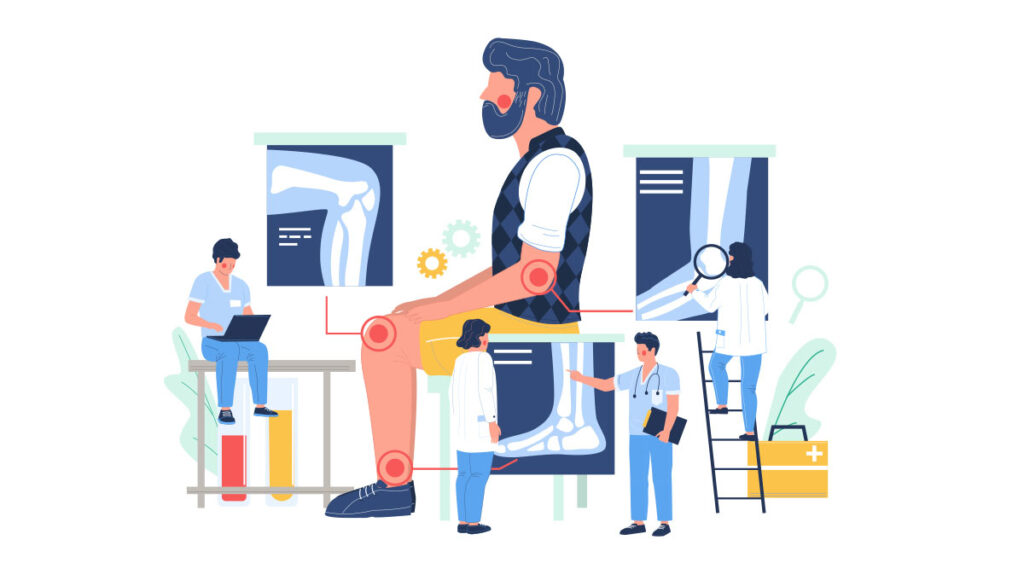
The first step in treatment for knee pain – and in most joint, muscle or bone injuries – is to rest. Taking a break from your normal activities lessens the strain on your knee, helps prevent further damage and helps provide knee pain relief.
Ice & Heat
Applying ice for under 20 minutes at a time lessens pain and inflammation in the affected area. Heat packs or hot water bottles may help provide knee pain relief temporarily.
Medication
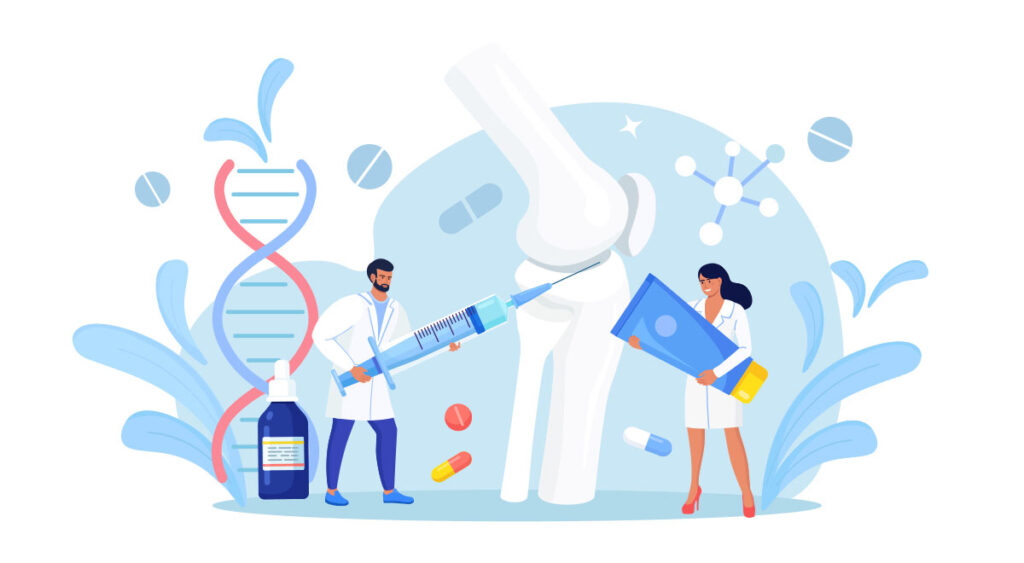
Over-the-counter medications such as nonsteroidal anti-inflammatory drugs (NSAIDs) are typically recommended to provide knee pain relief. A doctor may prescribe you stronger medication as treatment for knee pain if an underlying condition like rheumatoid arthritis or gout is responsible. Creams containing a numbing agent may help reduce pain when rubbed onto the affected area and offer a simple form of knee pain home treatment.
Supplementation
Certain dietary supplements offer health benefits to the knee when taken consistently. Glucosamine, chondroitin and type I and II collagen are all known to support joint, muscle and bone health and may therefore help with knee pain relief over time.
Physical Therapy & Exercise
In addition to knee pain home treatments, a physical therapist can help manipulate the tissue around painful areas, as well as recommend exercises to help support the knee joint. Certain exercises may be needed to correct unhealthy movement patterns during sport or activities, while strengthening exercises may be prescribed to those with arthritic knee pain. Even if such exercises induce pain, they do not make arthritis worse; over time, they will help to maintain healthy cartilage and provide knee pain relief long-term.
Supportive Devices
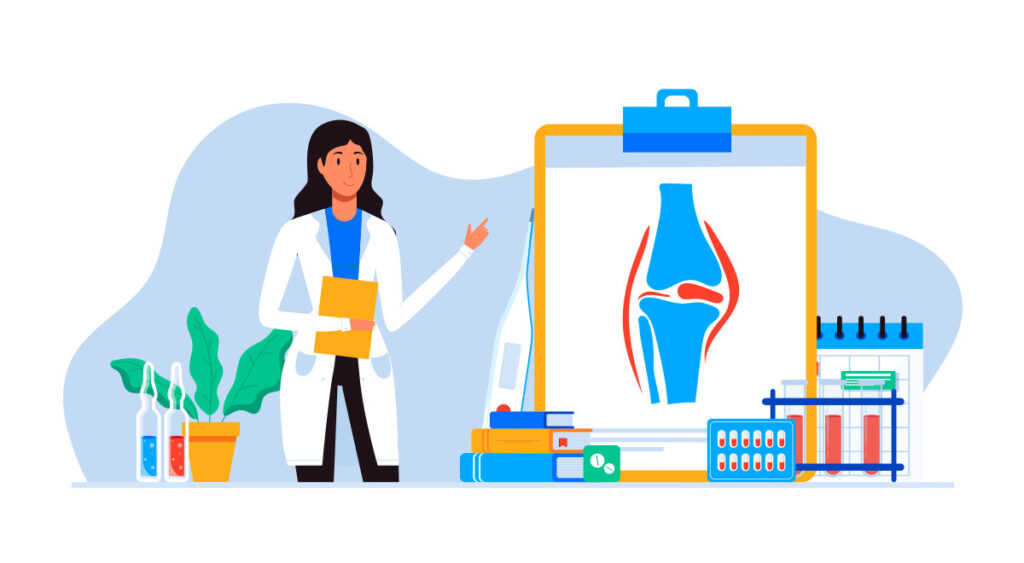
Certain supportive devices can be used as a form of knee pain relief. Compression bandages help prevent fluid build-up and maintain knee alignment. Knee braces provide external stability to the knee joint, helping to reduce pain and strengthen the knee muscles. Arch support placed into footwear can help shift pressure away from the painful side of the knee.
Injections
Injecting medications or other substances directly into the joint can help provide knee pain relief. These could include corticosteroids to reduce pain symptoms, platelet-rich plasma (PRP) that can help lower inflammation and promote healing, or hyaluronic acid – a thick fluid that may help to lubricate joints, improve mobility and ease pain.
Surgery
In some cases, surgery may be required to provide knee pain relief. It is not typically necessary to have the operation immediately. Arthroscopic surgery may be used to remove loose cartilage or repair damaged cartilage, as well as to reconstruct torn ligaments. An osteotomy involves removing bone from the thighbone or shinbone to align the knee and help relieve arthritis pain. This surgery may also help to provide knee pain relief while delaying or avoiding total knee replacement surgery. A partial knee replacement is minimally invasive, where the most damaged parts of the knee are replaced with metal and plastic. A total knee replacement requires damaged bone and cartilage to be cut away from the kneecap, thighbone and shinbone and replaced with an artificial joint made from metal, plastic and polymers. Knee pain home treatments and physical therapy are usually effective enough to provide knee pain relief. However, further treatments and surgery may be considered for more serious issues. Don’t ignore or push through pain, and seek urgent care if you experience significant swelling, an inability to fully extend or flex the knee, feelings of instability in the knee joint, a fever in addition to knee swelling and pain, or an injury that induces instant pain.
Knee Pain Causes
The knee is the largest joint in the body, responsible for allowing us to stand and bearing our weight continuously. Knees are highly susceptible to wear and tear, and pain in knees is very common as a result – particularly as we age. Irritation to the tissue surrounding the kneecap is usually responsible, and while keeping fit and active is key to our health and longevity, it is usually active individuals who put repetitive stress on their knees and are therefore at a higher risk of injury and pain in knees. Here is a closer look at a number of potential knee pain causes.
Brief Anatomy of the Knee
The kneecap, also known as the patella, is a thick, round bone that covers the front part of the knee joint.
There are two types of cartilage in the knee.
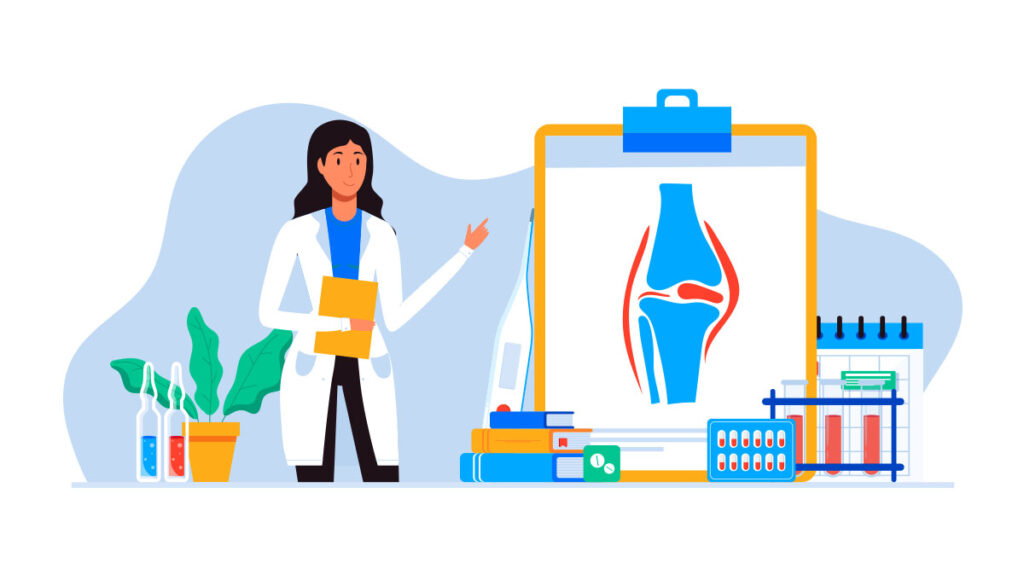
Articular Cartilage: This covers the end of the thighbone, the shinbone and the back of the kneecap. It is a slippery substance that helps the knee bones glide smoothly when the leg bends or straightens.
Meniscal Cartilage: This consists of two wedge-shaped pieces of cartilage on the inner and outer side of the knee that act as shock absorbers between the thighbone and shinbone. This cartilage is most typically responsible for pain in knees when individuals have torn their meniscus.
Knee Pain Causes
Injuries and Overuse
Strains or Sprains: Minor injuries to the knee ligaments and/or muscles are extremely common knee pain causes and are typically the result of a blow to the knee or sudden twisting. Symptoms may include pain, swelling and difficulty walking.
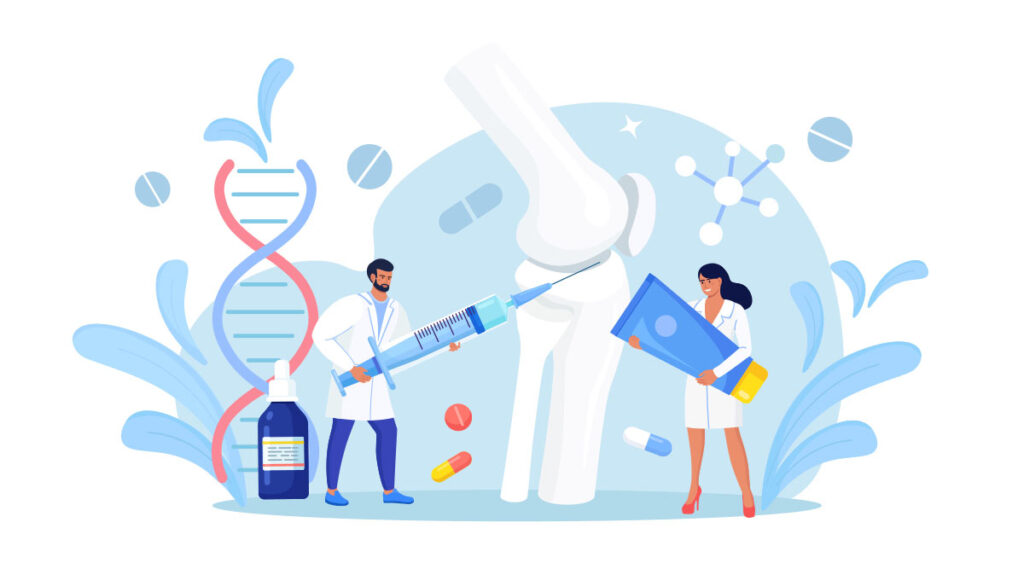
Torn or Injured Ligaments/Tendons: Tendon injuries can range from inflammation to a tear, typically from sports or a fall. Injury to the ACL (anterior cruciate ligament) is usually caused by a sudden twisting motion; injury to the PCL (posterior cruciate ligament) is typically the result of a direct blow, and damage to the MCL (medial collateral ligament) is often caused by pressure to the outside of the knee. All three may cause swelling and sharp knee pain, bleeding into the knee, or an unstable knee.
Cartilage Issues: Cartilage in the kneecap may soften from injury, overuse, misalignment of the knee or muscle weakness. A meniscus tear refers to torn cartilage resulting in pain in knees felt inside or outside the knee joint. Cartilage tears are one of the more common knee pain causes and often occur with sprains.
Bursitis: Inflammation can result from repeated pressure on the knee, causing swollenness, tenderness, warmth and pain in knees.
Tendinitis: Overuse during certain activities or a change in activity may result in inflammation of the tendons. When this occurs in the patellar tendon – one of the more common knee pain causes in sports as a result of hitting the ground after a jump – it is referred to as “jumper’s knee”.
Iliotibial Band Syndrome: This involves injury to the thick band that runs from the hip to the outside of the knee. It may result in a clicking or rubbing feeling on the side of the knee, pain that increases with activity, and pain that spreads to the hip.
Patellofemoral Syndrome: This is one of the more frequent knee pain causes affecting children and young adults, involving pain behind or around the kneecap, particularly when flexing the knees.
Dislocation of the Kneecap: When the kneecap is dislocated as a result of direct trauma, it may slip sideways to the outside of the knee. It could appear deformed, the knee may stay bent and unable to straighten, there is likely to be sharp knee pain, tenderness and swelling, and the result may be a “sloppy” kneecap, where the kneecap can move too far to the left and right.
Broken Kneecap: The patella may fracture or break as a result of a fall or a direct blow to the knee, resulting in bruising, sharp knee pain, severe swelling and limited mobility.
Medical Conditions
Arthritis: Osteoarthritis is a common form of arthritis that can affect the knees. This degenerative condition results in cartilage wearing down over time, which may cause pain and stiffness in one or both knees. Pain may feel worse at the end of the day or during movement, or may improve with rest. Rheumatoid arthritis causes inflammation in the joints that can destroy knee cartilage over time, resulting in swelling, pain and limited mobility.
Baker Cyst: This refers to a swelling behind the knee that is filled with fluid, and may be the result of other knee pain causes, such as arthritis.
Osgood-Schlatter Disease: This condition may affect children and younger individuals, causing a bony lump to form below the knee cap which becomes painful and swollen with exercise.
Chondromalacia: Also referred to as “runner’s knee”, this is one of the more degenerative knee pain causes that results from chronic wear on the kneecap or a traumatic injury. Chondromalacia causes articular cartilage to soften and fray over time. Pain in knees may be felt at the front of the knee, especially when walking up and downhill, and grinding or clicking may be experienced when the knee flexes or extends.
Cancer: Far less likely than other knee pain causes, cancers that either spread to or begin in the bones may induce pain in knees. Individuals usually respond well to treatments such as pain medicine, ice, rest and therapeutic exercises. However, surgery may be required when the knee has structural damage, or if it has not responded to other methods of pain relief.
Knee arthritis – Symptoms, types, and treatments
Knee arthritis is a common medical condition that can significantly impact your daily life.
From joint stiffness to reduced range of motion, the symptoms of knee arthritis can make even the simplest tasks, like walking, a painful experience.
While most forms of arthritis are incurable, there are ways to effectively manage the symptoms.
In this article, we will learn about different forms of knee arthritis, their symptoms, and available treatment options. Keep reading if you are ready to say goodbye to your knee pains!
What is knee arthritis?
Knee arthritis is not one disease but rather a term encompassing different forms of arthritis. What these diseases have in common is that they all affect the knee joints.
Knee arthritis symptoms
While arthritis in the knee can have different forms, each with its own progression curve, the symptoms of these diseases are usually similar.
One might experience the following:
- Joint pain that increases with movement or after longer periods of standing or sitting
- Stiffness
- Swelling
- Redness around the joint area
- Decreased range of motion
- Unexpected locking of the knee
- Cracking or clicking sound when moving the joint
- Weakness in the knee
Certain forms of arthritis might also have some additional symptoms, like fever or fatigue, which might indicate inflammation.
Types of knee arthritis
While symptoms might be similar across most forms of knee arthritis, the underlying cause, the progression of the disease, and treatment options may vary, depending on the type of arthritis.
For this reason, it's crucial to get a proper diagnosis and determine the kind of knee arthritis we're dealing with.
Below, we will look at the most common forms of arthritis that might affect the knee joints.
Osteoarthritis
Osteoarthritis is the most common form of arthritis. It's a degenerative disease where the cartilage between bones starts to break down. The condition worsens over time, sever osteoarthritis might cause permanent damage to the bones as well.
It can affect any joint in the body, including the knees.
Old age, physical trauma, and genetic factors can all increase the risk of developing osteoarthritis in the knee.
As with many other forms of arthritis, osteoarthritis is incurable. The best course of action is to reduce the impact of symptoms through medications, lifestyle changes, and in some cases, surgery.
Rheumatoid arthritis
Rheumatoid arthritis is an autoimmune disease where the immune system attacks healthy tissues in the body. Most of the time, it affects the joints - including the knees - but may also cause damage to the skin, organs, and other areas of the body.
The symptoms are similar to other forms of arthritis: pain, stiffness, and tenderness in the joints. Additionally, people with rheumatoid arthritis might experience fevers, weight loss, fatigue, and general weakness. A common sign of rheumatoid arthritis is when the symptoms appear symmetrically on both sides of the body.
Rheumatoid arthritis can occur at any age, and the causes of the disease are not yet known. It appears more commonly in women or those with a family history of the disease. Smoking might also increase your risk of developing it.
There is no cure for rheumatoid arthritis, but it's possible to lessen the effects of the symptoms with medications.
Post-traumatic knee arthritis
Post-traumatic knee arthritis is a form of osteoarthritis that develops after a trauma or an injury to the joint. It might appear shortly after the trauma, but even a previously healed injury can cause post-traumatic knee arthritis later. Usually, it has a faster progression than simple osteoarthritis.
Symptoms are similar to osteoarthritis. The only difference is the speed the disease develops, with post-traumatic arthritis being faster.
When treating post-traumatic knee arthritis, doctors usually focus on pain management and stabilizing the affected joint through low-impact exercise, physical therapy, or braces.
Gout
Gout is a kind of arthritis that might develop resulting from too much uric acid in the body. The urate buildup might form sharp little crystals in the joints, causing pain flare-ups, redness, tenderness, inflammation, and joint discomfort.
Gout most commonly develops in the big toe, but later stages of the disease can affect other joints too. While gout of the knee is rare, it's not unheard of.
During treatment, doctors usually focus on managing the pain attacks and lowering uric acid levels. They may also check for underlying kidney problems, which could cause the urate buildup.
Diagnosing knee arthritis
Doctors can diagnose arthritis in the knee with a combination of physical examination, X-ray or MRI imaging, and blood or joint-fluid tests.
When diagnosing arthritis, it's crucial to look for possible underlying causes and to find the exact form of arthritis, as treatment might be different for each.
Knee arthritis treatment
The course of treatment for knee arthritis depends on which type of arthritis you're dealing with. Non-inflammatory arthritides like osteoarthritis might call for simple painkillers, while autoimmune diseases like rheumatoid arthritis might get treated using immunosuppressants.
In severe cases of knee arthritis, doctors might suggest surgery. Surgical options are usually a last resort, and they might include joint replacement, joint fusing, or realignment of the joint.
If you’d like to know more about your treatment options, make sure you read our article on arthritis remedies.
The Dos and Don'ts of living with knee arthritis
In addition to seeing a doctor and getting treatment for your knee arthritis, there are a few things you can do for yourself to lessen the impact of your condition. And some other things you should avoid when you have arthritis.
The Dos
These small lifestyle changes and techniques might help you ease the pain and slow down the progression of the disease.
Stay active
When dealing with knee pain, it's easy to fall into a more sedentary lifestyle in hope of avoiding the pain. But that usually only makes arthritis worse. So make sure you get some exercise, even if it’s just a couple of minutes a day.
Choose low-impact activities that don't put too much stress on the joints. Swimming, rowing, tai chi, and yoga are all good options.
Try to maintain a healthy weight
Putting too much weight on your knees can stress the joints and speed up the progression of arthritis. So it's best to maintain a healthy weight as much as you can.
Following a balanced diet and doing low-impact cardio - like swimming - can help you achieve that.
Support your knees
You might want to use external support to reduce stress on your knees. Wrap bandages, braces, or even walking canes can help by stabilizing and supporting the joint.
The Don’ts
There are some other things that you might want to avoid if you are dealing with knee arthritis.
Don't put further stress on your joints
Try to reduce unnecessary load and stress on your knees. Avoid high-impact sports such as running, soccer, kickboxing, or basketball.
Only carry as much weight as your knees can safely support. If your knee joints are weak as a result of arthritis, it's best to avoid hauling heavy loads like furniture and so.
Always wear protective gear when doing activities with a risk of falling - like cycling. Knee protectors can reduce further joint damage.
Don't eat too many unhealthy foods
Following a healthy and balanced diet comes with many benefits, and it can also reduce the impact of arthritis in some cases.
It's best to avoid inflammatory foods like fried meals, red and processed meats, refined grains, and sodas. Doctors also advise cutting back on alcohol, as certain beverages amplify the inflammatory symptoms of arthritis. You might want to introduce some anti-inflammatory foods to your diet instead, like salmon, blueberries, tomatoes, and green leafy vegetables, to name a few.
Common Joint Pain Causes in Adults
Causes of joint pain in adults
Joint pain in adults might result from a variety of diseases and conditions. In this article, we will explore these possible causes and their symptoms.
Sprain or strain
We might experience joint pain due to sprain or strain, especially after a fall or injury. A sprain is when the ligaments - the tissues connecting the bones - overstretch or tear. A strain is when the same thing happens to the muscles around the joint or the tissues that attach the muscles to the bones. Both conditions can cause intense joint pain, but they usually heal well without permanent damage.
Symptoms:
- Pain, tenderness, and swelling in the joint area
- Weakness of the affected joint
- Reduced weight-bearing capacity
- Muscle spasms or cramping
- Visible bruises in the area
Arthritis
Arthritis is an umbrella term that describes many different joint diseases that cause inflammation in the joints. These conditions may vary in their symptoms, severity, and possible treatment options. Most forms of arthritis are chronic conditions with no cure, so often, the goal of treatment is reducing the symptoms.
Symptoms:
- Inflammation of joints
- Joint pain
- Joint stiffness
- Possible redness and swelling around the joint
Hemarthrosis
Hemarthrosis means internal bleeding that leaks into the joint cavity. It might result from a bleeding disorder, injury, infection, or an autoimmune disease. The condition might also occur after surgery. When treating hemarthrosis, doctors look for the underlying cause of the bleeding and focus on fixing that. If hemarthrosis comes from an injury, it might often heal with rest.
Symptoms:
- Joint pain
- Swelling of the joint
- Possible discoloration under the skin
- The joint might feel warm to the touch
Fibromyalgia
Fibromyalgia is a chronic condition that affects the whole body, causing musculoskeletal pain, fatigue, and other problems. While joint pain might be common with the disease, it's usually only a small fraction of the symptoms. Fibromyalgia has no cure yet, so the best course of treatment is to minimize the impact of these symptoms.
Symptoms:
- Muscle pain
- Fatigue
- Headaches
- Digestive and bladder issues
- Mental symptoms like anxiety, depression, and insomnia
Osteoporosis
Osteoporosis is a disease that weakens the bones. It occurs when the bone tissues break down faster than they can be replaced. The condition causes the bones to become porous, brittle, weakened, and more prone to injuries. While osteoporosis doesn't directly cause joint pain, compression fractures can occur in weakened bones - especially in the vertebrae - which might feel like joint pain.
Symptoms:
- Your hair and nails might become brittle
- Weakened grip
- Receding gums
- Loss of height
- Bones break or fracture easily
Bursitis
The cushioning around the joints is called bursae. Bursitis is a condition when these little sacks of fluid become inflamed. The most commonly affected joints are the shoulders, elbows, and hips. But it can also occur in the knees, the heels, and the base of the big toe. Bursitis is often the result of repetitive stress on the joint.
Symptoms:
- Joint pain and stiffness
- The pain increases with movement or pressure
- Swelling
- Redness
Tendonitis
Tendons are strong, flexible tissues connecting the muscles to the bones and joints. Tendonitis is the inflammation of these tissues. The condition responds well to rest and medicine and usually heals on its own. However, long-term inflammation of these tissues can cause tearing, which might require other treatment methods as well, sometimes even surgery.
Symptoms:
- Dull pain in the area
- Possible swelling and tenderness
Temporomandibular joint dysfunction
The temporomandibular joints (TMJ) connect our jawbone to the skull. TJM dysfunction usually means pain and discomfort in the area or even reduced range of motion. The causes might be dental issues, different forms of arthritis, the physical stress of the joint, or many other medical conditions. TMJ treatment might include rest, medication, or managing the underlying condition that causes the dysfunction.
Symptoms:
- Discomfort or pain in the jaw
- Ear pain
- Locking of the jaw
- Clicking sound when chewing
- Uneven bite
- Headache
- Neck or shoulder pain
Adhesive capsulitis
Adhesive capsulitis - or more commonly known as frozen shoulder - is a condition that causes pain, stiffness, and limited range of motion in the shoulders. The flexible tissues surrounding the shoulder become tighter and shrink, and the ability to move the shoulder decreases drastically over time. A frozen shoulder can develop due to trauma, the lack of movement after an injury, or inflammation. Treatment can include physical therapy, medications, or surgery. The shoulder usually heals on its own, even without treatment, but it will take much longer.
Symptoms:
- Stiffness in the shoulder
- Movement becomes painful
- Drastically decreased range of motion
Patellofemoral pain syndrome (PFPS)
Patellofemoral pain syndrome - also known as PFPS - is a medical term that describes pain in - or around - the kneecap. The pain increases when walking up or down stairs, squatting, or flexing the knee. It can result from repeated stress or the misalignment of the kneecap. Treatment usually involves resting the joint, managing the pain, and avoiding further stress.
Symptoms:
- Knee pain that gets worse with repeated movements
- Pain after long periods of sitting
- Cracking sounds when bending the knee
What to do if you experience joint pain?
While every joint condition and disease is different, with different treatment options, these simple tactics can help you to ease the pain in most cases.
- Let the joint rest
- Avoid further stress and overuse
- Despite the pain, don't entirely stop moving the joint
- Avoid high-impact activities
- Apply an ice pack to the joint
- Explore pain management options
When to see a doctor?
Mild joint pains resulting from bruises or overuse may easily go away just by letting the joint rest and heal. In other cases, seeing a doctor might be crucial.
You should seek professional help if:
- The pain doesn't improve for more than two weeks
- The pain gets worse over time
- You can't perform everyday activities
- The pain affects your sleep
You should seek emergency assistance if you experience the following symptoms:
- Joint pain accompanied by fever
- The joint is red, swollen, and feels hot
- You are unable to walk or move the joint
- You experience severe pain after an accident or injury
- The joint moves out of place
- Tingling sensation or loss of feeling in the area
The above symptoms might signal severe trauma, nerve damage, or an infection, all of which should get immediate treatment to avoid permanent damage.
Joint pain relief
Pain management is an integral part of the treatment for any painful joint condition as it makes the healing process easier and less uncomfortable. If you'd like to know more about your options, check out our article on joint pain management.
Joint pain relief – What are your options?
Joint pain can significantly impact our quality of life, turning even simple everyday tasks into tough challenges. It might stem from overuse, stress, injury, or disease, but regardless of the root cause, finding the correct pain management options is crucial to restoring mobility and overall well-being.
We will explore various techniques and approaches for pain relief. By understanding the options and adopting a holistic approach, you will be able to manage joint pain and regain control of your life.
Understanding the causes of joint pain
Joint pain can be acute and chronic. The source of it can range from mild overuse to incurable diseases that affect the whole body. Arthritis, inflammatory diseases, autoimmune conditions, injuries, old age, wear and tear of the tissues; there are so many things that can cause joint pain.
So, to effectively manage joint pain, it's crucial to understand the cause. It will not only help you find the correct pain management options, but by identifying the source, you might be able to discover any dangerous underlying issues that might need additional attention.
If you want to learn more about diseases that might affect your joints, make sure you read our joint pain guide as well. And don't forget that it's always best to consult a doctor if you experience severe or long-standing joint pain.
Joint pain medications
One of the most reliable ways to manage joint pain is through drugs. These pills and injections can effectively treat even severe pains. There are three types of medication:
Over-the-counter pain medications for joint pain
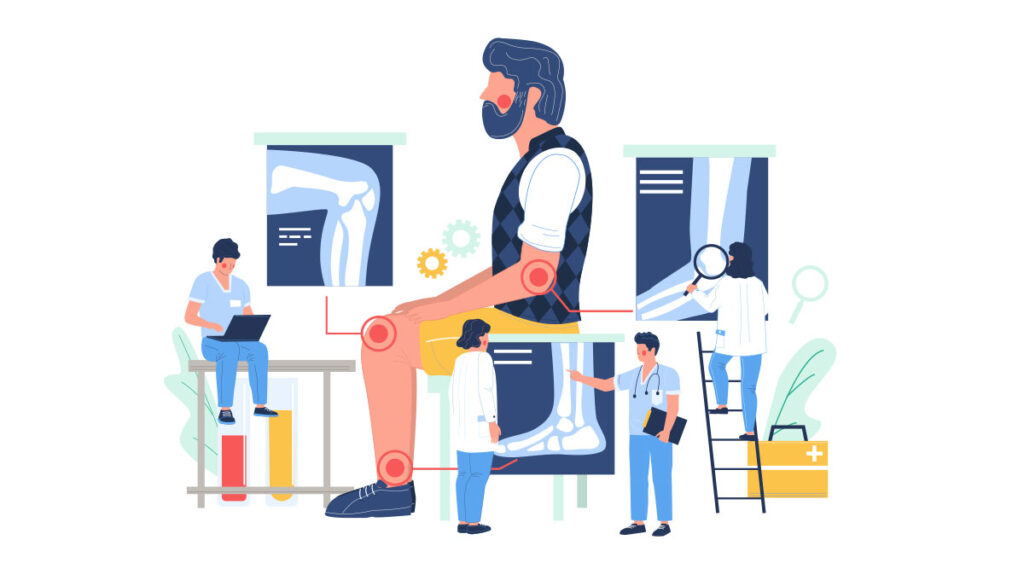
Over-the-counter (OTC) medications are those you can purchase in your supermarket or a grocery shop. There are generally two options when it comes to OTC pain relief medications:
- Acetaminophen, or paracetamol, is a drug that can reduce mild pains and fever. Tylenol and Panadol are the most common acetaminophen.
- Most NSAIDs are oral medications, but they also come in topical solutions like creams, gels, and pain patches, which might prove effective when dealing with joint pain.
Prescription pain medications for joint pain
In cases of severe pain, doctors might prescribe painkillers with more potent ingredients.
Higher prescription-strength NSAIDs and steroids are prescribed for severe or chronic joint pain. They help reduce inflammation, provide pain relief, and improve joint function.
Opioids which have potent analgesic effects, such as codeine or oxycodone, are also prescribed for severe joint pains when other medications have been ineffective. These medications tend to have a higher risk of serious side effects, and their continuous use can lead to addiction.
Disease-modifying antirheumatic drugs
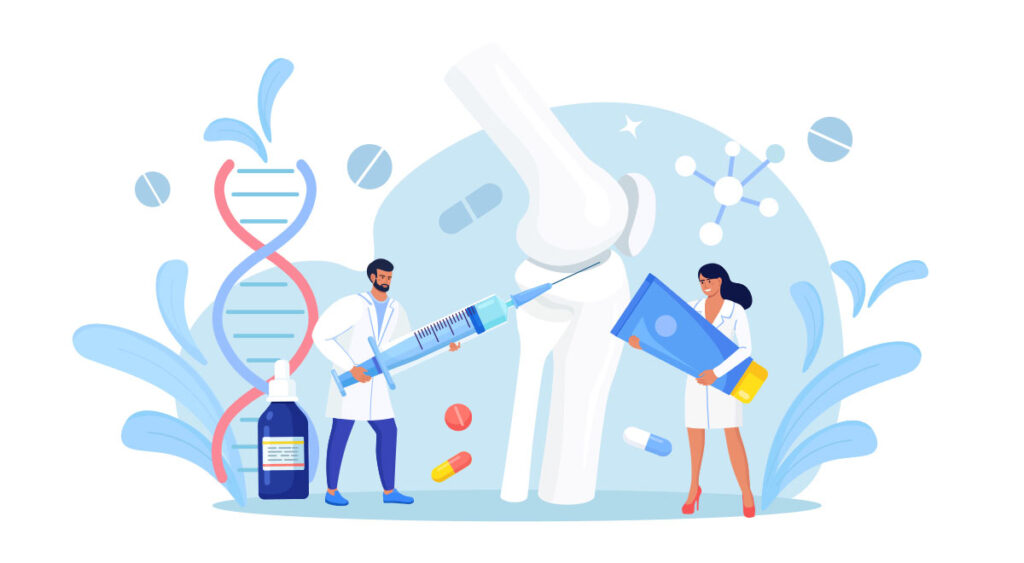
Disease-modifying antirheumatic drugs (DMARDs) are sometimes used to treat inflammatory joint conditions like rheumatoid arthritis (RA) and psoriatic arthritis.
These drugs relieve pain by altering the disease's progression and reducing symptoms. They work by suppressing the immune system and reducing the autoimmune reaction of these joint diseases, which comes with the downside of a weakened immune function.
Non-medicine-based joint pain relief options
In addition to drugs, doctors sometimes recommend alternative pain management methods or treatments that provide relief for joint pains. These techniques can often be used alongside traditional medications and provide additional pain relief.
Pain relief therapies
Different therapies exist that target painful areas and relieve the pain through specific activities:
- Physical therapies focus on targeted exercises, stretches, and techniques to improve joint function, enhance mobility, and reduce pain. By using personalized rehabilitation strategies, physical therapy can promote long-term joint health.
- Temperature therapies involve the application of heat or cold to the affected joint. While heat therapy through warm compressions or heating pads can help relax muscles, increase blood flow, and alleviate stiffness, Cold therapy through ice packs can reduce inflammation, numb the area, and provide temporary pain relief for inflamed joints.
- Massage therapy can provide pain relief through the manipulation of soft tissues. It reduces muscle tension, enhances flexibility, and improves circulation.
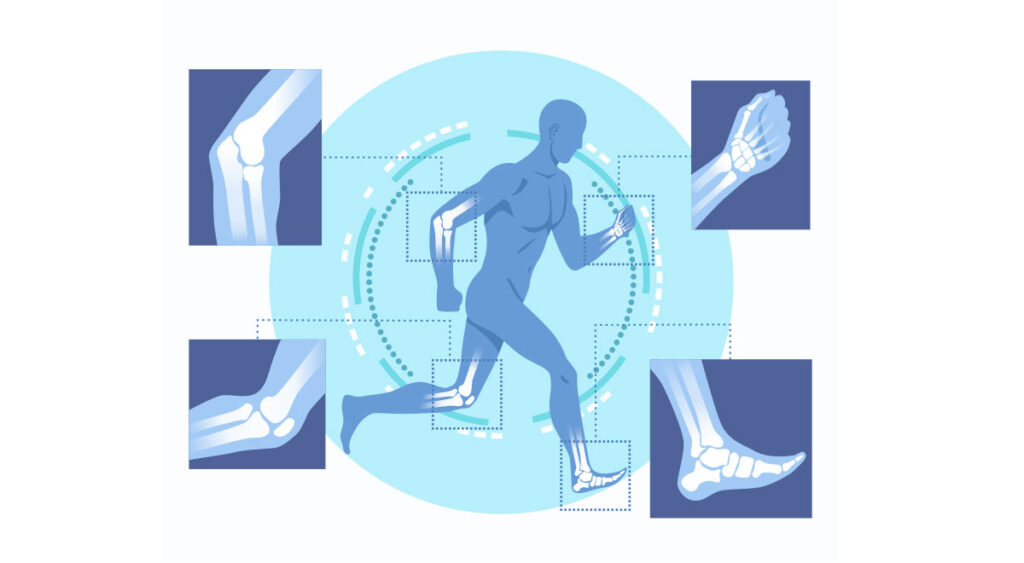
It is important to note that while such therapies undoubtedly help in relieving pain, they have to be done or recommended by professionals.
Assistive devices
Most joint issues make movement difficult and painful. Assistive devices such as canes, braces, and orthotics can provide external support to joints, redistributing weight and reducing stress on painful areas. These devices can reduce strain on the joints and allow individuals with joint pain to engage in daily activities with greater comfort.
Meditation
Meditation is a proven way to increase your overall well-being and relieve pain at the same time. It triggers the release of endorphins, a hormone that acts as a natural painkiller. Furthermore, it reduces stress, improves emotional health, and increases focus.
Lifestyle changes
Minor lifestyle changes can also help reduce stress on the joints and promote overall joint health. Below are a few changes you can incorporate in your daily life which can prevent long-term pain problems:
- Rest your painful joints at the end of the day.
- Maintain a proper posture to distribute weight when lifting heavy objects.
- Follow a healthy and balanced diet to provide the essential nutrients for the tissues.
- Regularly exercising and maintaining a healthy weight to reduce the load on the painful joints especially, your knees and foot.
Regular check-ups and screenings with your healthcare provider
Natural remedies for joint pain relief
Several natural ingredients can also be used to treat pain and provide relief. However, not all natural remedies are scientifically proven and sometimes have only anecdotal evidence supporting their use. Make sure that you always check the official medical opinion or consult with your doctor before trying something new.
Herbal remedies for joint pain
People who'd like to avoid the side effects of traditional drugs might turn to herbal remedies in supplement forms or herbal pain patches to alleviate mild joint pains and symptoms.
Turmeric is known for its anti-inflammatory properties and proved to be effective in treating osteoarthritis patients. Chamomile and boswellia have also shown good results in treating joint pains.
Omega-3 fatty acids
Research on Omega-3 fatty acids has shown that they may support the cardiovascular system, boost immunity, and support brain health with some evidence suggesting that they may protect against cartilage loss and reduce joint inflammation.
These essential fatty acids naturally occur in fatty fish, flaxseeds, and chia seeds, but they are also available as dietary supplements, containing a higher dosage.
Topical essential oils
Research suggests that topically used essential oils, such as peppermint, eucalyptus, and lavender, may reduce joint pain and stiffness. These oils possess analgesic and anti-inflammatory properties that can provide a soothing effect.
Innovations in drug-free joint pain relief options
While traditional painkillers are usually reliable and some of them can alleviate even severe pains, their side effects can't be ignored, especially in the long run. Alternative or natural pain relief options come with less serious side effects, but often they are not as potent and/or consistent as traditional drugs.
New technologies and solutions arise from time to time. These solutions often come in the form of pain patches due to their ease of application and contour-binding properties that allow the users to apply them anywhere on their body. Besides the few types of patches mentioned earlier, some patches use weak electrical currents to relieve pain, and there is the Freedom Patch that is apart and ahead of others. Freedom Patch from Super Patch is a pain relief patch backed by strong scientific research and the principle of providing a drug-free solution. The Freedom Patch uses vibrotactile technology which communicates directly with the nerve pathways to disrupt pain signals and alleviate pain. Our Freedom Patch along with other patches is FDA-registered, non-invasive and 100% drug-free making it an effective solution for pain relief without any side effects.
Joint Pain in Foot: Causes and Treatment Options
Foot joints play a vital role in our everyday lives, allowing us to stand, walk, and engage in various physical activities. However, when joint pain strikes, it can significantly hinder our mobility and quality of life.
Understanding the causes, symptoms, and treatment options for foot joint pain is crucial for effective pain management and treatment.
In this article, we will explore the most prevalent causes, common prevention strategies, and pain management techniques.
Understanding foot joints and their functions
The foot consists of numerous joints, including the ankle, the heel, the toes, and various joints within the midfoot and forefoot. And they all play a vital role in providing stability, flexibility, and support to the entire body.
When we experience joint pain in the feet, these vital functions might suffer, leading to reduced mobility, loss of stability, and a decreased ability to perform everyday activities like walking.
What causes joint pain in the foot?
Joint pain might stem from many different sources. Overuse, injuries, joint diseases, and other medical conditions could all cause pain in the foot.
Below, we'll look at the most common causes.
Sprain and strain
Strains and sprains are common injuries that can result in joint pain in the feet. A strain is the overstretching or tearing of the muscles or tendons, often caused by repetitive or forceful movements. And a sprain is when the same happens to the ligaments that connect the bones, typically caused by sudden twists or impacts.
Both conditions can lead to inflammation, stiffness, swelling, and joint pain.
Injury
Falls, accidents, or sport-related impacts can all cause trauma to the joints and result in damage. This can range from mild to severe injuries, causing pain, discomfort, swelling, and instability in the joint.
Infection
Infections can cause trouble in any part of the body, including the joints. The infection could be isolated in the joint space, but it might also be part of a bigger, systemic issue.
Bacteria, fungi, and viruses can all infect the joint tissues or fluids. These might result in symptoms like high fever, inflammation, swelling, redness, and pain.
An infection left untreated might cause severe damage. So, it's best to get medical assistance as soon as possible.
Arthritis
Arthritis is a term that refers to a variety of joint conditions. Most of these diseases cause inflammation and potentially foot and ankle pain.
Arthritis has many different forms, each with its unique symptoms and progression curves. Most of them are incurable chronic conditions. The ones most commonly affecting the joints of the feet are rheumatoid arthritis, psoriatic arthritis, and osteoarthritis. Gout is also a worthy mention here, as its most common first symptom is big toe pain.
Plantar fasciitis
Plantar fasciitis is an inflammation in the plantar fascia, the soft tissue at the base of your feet, connecting the heel to the toes.
When this tissue suffers from overuse, overstretching, or other trauma, it might swell, become inflamed, and cause severe pain in the heels and the bottom of the foot.
Bunion
Hallux valgus is when the bones in your forefoot misalign, which might result in bony lumps - called bunions - forming on the side of the feet. These bumps might cause toe joint pain, reduced range of motion in the toes, and visible bulge or swelling.
Bursitis
Bursitis is the inflammation of the bursae. These are little, delicate fluid-filled cushions around the joints. This inflammation leads to joint pain that gets worse with movement. Other symptoms might include swelling, redness, and stiffness of the foot joint.
Capsulitis
Capsulitis is an inflammation in the ligament of the joint. When it occurs in the foot, it almost always affects the second toe or rarely the third toe. It causes joint pain in the ball of the foot under the affected toe. Capsulitis often gets worse over time, sometimes even leading to joint dislocation.
Tendinitis
Tendons are thick and tough tissues that connect the bones and the muscles. They might get inflamed due to overuse, repetitive movement, or trauma. When this happens, we call the condition tendinitis or tendonitis.
Tendinitis in the foot often affects the Achilles tendon, which results in tenderness and pain in the ankle and the heel.
How to manage joint pain in the foot?
Whatever the cause, foot pain can be a hindering experience that might restrict your movement and everyday activities. So, pain management is a crucial part of any treatment plan.
Let's take a look at your options when it comes to foot pain relief.
Painkillers and traditional drugs
OTC or prescription painkillers are one of the most reliable methods of pain management available.
Standard analgesics like paracetamol can ease pain, while nonsteroidal anti-inflammatory drugs (NSAIDs) can help reduce inflammation in addition to pain relief.
When the pain is caused by some chronic condition, doctors might recommend additional medicines. For example, an autoimmune disease might call for DMARDs, and corticosteroids can relieve chronic joint pains like arthritis.
While traditional drugs are effective and proven pain management methods, their downside lies in their side effects, which might be more apparent when we take them for long periods.
Physical therapy and movement modifications
In addition to drugs, mechanical methods could also help relieve joint pain in the foot.
Physical therapy is a good example, where a certified professional can teach us exercises and gentle stretches. These could help by reducing stiffness, improving circulation, and strengthening the joints.
Another mechanical way to relieve foot pain is through movement modifications. This can be as simple as changing the way you sit at work or spending less time in positions that put stress on the painful foot joints. Some equipment, like shoe inserts, braces, bandages, and walking canes could offer additional support to the foot joints. These might reduce the weight and stress on the painful joint, or restrict movement to some degree, stabilizing the joint to let it heal faster.
Good posture and ergonomics might also be crucial to avoid joint pains in the feet. Consider investing in quality shoes and shoe inserts, especially if your work requires walking or standing on your feet for extended periods.
Drug-free pain remedies
Whether you have allergies, want to avoid the side effects of traditional drugs, or you're looking for supplemental pain relief, drug-free pain remedies might be the answer.
Heat and cold therapy, for example, is an effective and science-backed way to relieve pain. It's entirely drug-free and doesn't interfere with traditional medicines.
Another option might be drug-free pain patches. Our Freedom pain patches, for example, use innovative vibrotactile technology, which communicates directly with the nervous system to reduce pain, and does this in an entirely non-invasive way without any drugs.




